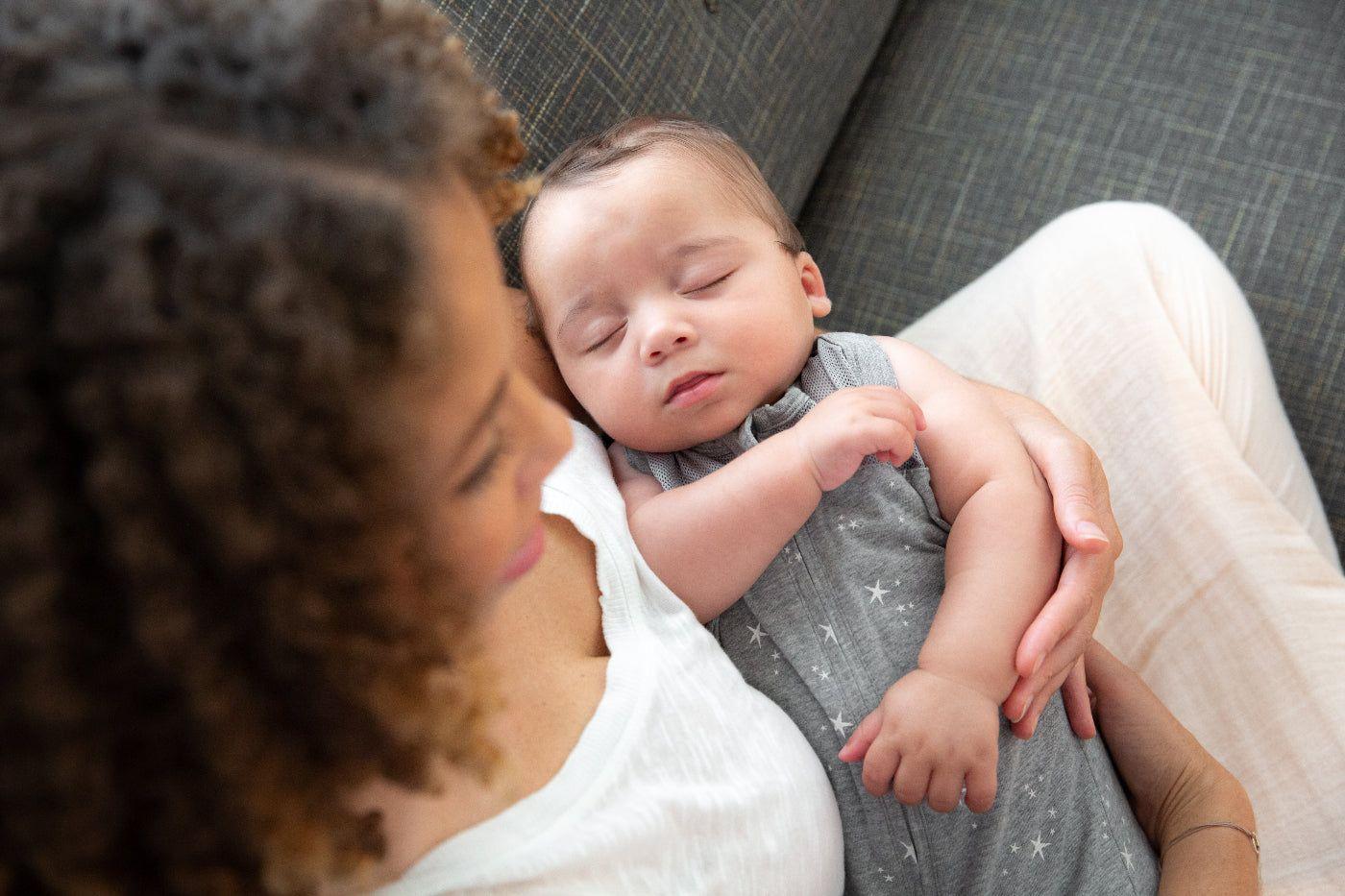BABY
What to Do When Your Baby Won't Sleep Unless Held
This common struggle exhausts parents and makes them feel…stuck.

Written by
Dr. Harvey Karp

SHARE THIS ARTICLE
PARENT PICKS
Bestsellers
BABY

Written by
Dr. Harvey Karp

SHARE THIS ARTICLE
Bestsellers
Does this sound familiar: You lay your sleeping (or sleepy) baby down in their cot as gently as possible, but the second their little body brushes the sheet, the screaming starts? Then, of course, as soon as your baby is back on your chest, the crying immediately stops and the ZZZs come easy. This is a common sleep struggle that exhausts parents and makes them feel, well, stuck. And that is because when babies regularly sleep on you, they begin to learn that sleepytime occurs in your arms, not the cot. It is tough! But I am here to help you get unstuck! As impossible as it may seem now, rest assured, you can get your baby to sleep soundly in their cot.
Babies are not fools! They know a good thing when they find it. To your little one, your warm, familiar, subtly moving body is so much more welcoming than that quiet and still cot. Quite simply, when your baby is nestled in your arms, they are reminded of the womb, complete with gentle movements, a snug embrace, and the comforting sound of your heartbeat.
It can feel very sweet when your baby sleeps on your body, but it is actually risky to let your little one do this. I have gotten too many emergency calls in the middle of the night after a sleeping baby perched on their parent’s body has fallen to the floor. Plus, co-sleeping on any surface, like a couch, reclining chair, or an adult bed, greatly increases a baby’s chances of sudden infant death syndrome (SIDS.) (In fact, the National Health Service recommends not to share the bed with your baby.) Remember, you want your baby close to you when snoozing, which means in your room for at least the first six months—not on your body!
Many parents find that giving their babies a fourth trimester of comforting stimulation can greatly improve their little one’s sleep. That means, lean into some of the 5 S’s for soothing babies: Swaddling, shushing, swinging, and sucking. (All of the 5 S’s help to activate your baby’s innate calming reflex, which is nature’s 'off switch' for crying and 'on switch' for sleep.) Unfortunately, the fifth S, side/stomach position, is not safe to use for sleep…but that is a position lots of babies who sleep on their parents prefer! If you have a baby who really loves that particular S, you want to do the other four S’s even more to try to help your sweet baby sleep on their back. Here are the basics for getting your baby to sleep without being held:
Over the years, I have worked with thousands of families and have found that many babies still prefer sleeping on top of their parents, despite being swaddled and having white noise. That is one of the reasons I worked for five years with MIT-trained engineers to develop SNOO, my responsive smart cot that soothes babies and aids sleep with the calming trifecta of womb-like motion, safe swaddling, and all-night white noise. After all, we already know that swaddling, rumbly white noise, and rocking are great sleepytime cues! So, think of SNOO as a one-stop sleep solution that safely provides three out of 5 S’s for sleep. (Plus, SNOO is incredibly helpful to especially finicky babies who love being held, in part, because they easily rouse at any little bump in the night.) Here are a few more reasons to choose SNOO:
Disclaimer: The information on our site is NOT medical advice for any specific person or condition. It is only meant as general information. If you have any medical questions and concerns about your child or yourself, please contact your health provider. Breastmilk is the best source of nutrition for babies. It is important that, in preparation for and during breastfeeding, mothers eat a healthy, balanced diet. Combined breast- and bottle-feeding in the first weeks of life may reduce the supply of a mother's breastmilk and reversing the decision not to breastfeed is difficult. If you do decide to use infant formula, you should follow instructions carefully.